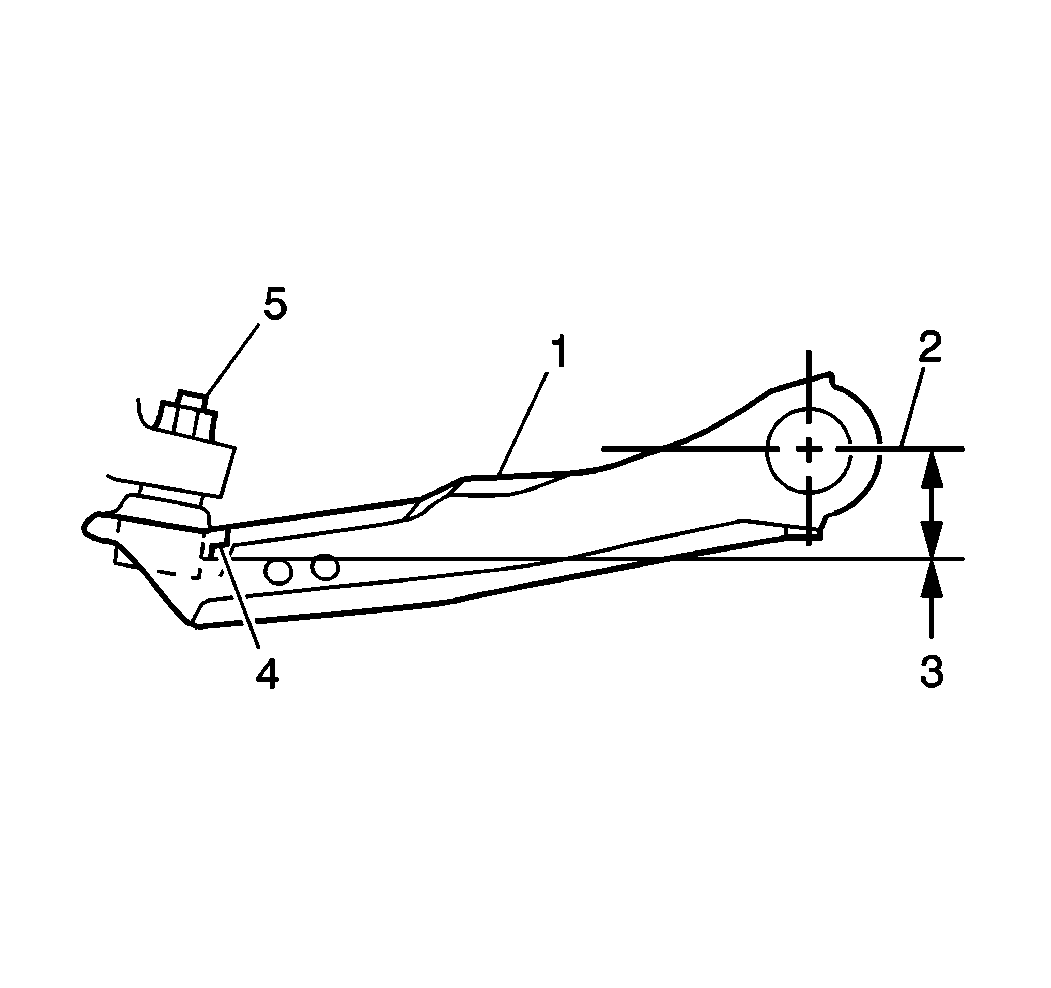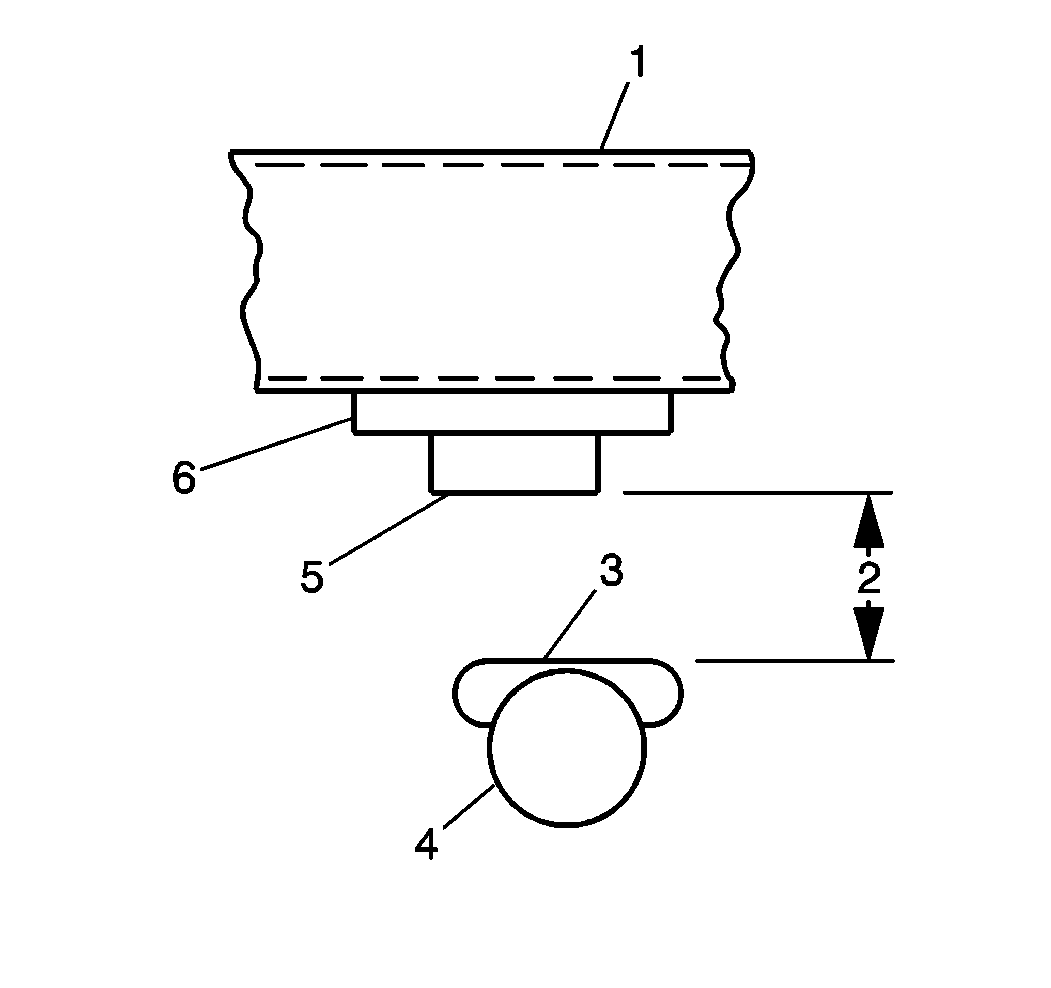Z Height Measurement
- Lift the front bumper of the vehicle up about 38 mm (1.5 in).
- Gently remove your hands. Let the vehicle settle.
- Repeat this operation for a total of three times.

- For 2WD vehicles, measure
from the pivot bolt center line (2) down to the lower ball joint extrusion
(4) in order to obtain the Z height dimension (3).

- For 4WD vehicles, measure
from the pivot bolt center line (2) down to the lower corner (5) of the steering
knuckle (1) in order to obtain the Z height measurement (4). For torsion
bar adjustment, refer to
Torsion Bar and Support Assembly Replacement
in Front Suspension.
- Push the front bumper of the vehicle down about 38 mm (1.5 in).
- Gently remove your hands.
- Allow the vehicle to rise.
- Repeat the operation twice for a total of three times.
- Measure the Z dimension.
The true Z dimension number is the average of the high and low measurements.
| • | For C1, 2, and 3 vehicles, the Z measurement should be between
89-101 mm (3.5-4.0 in). |
| • | For K models, use the following Z measurements: |
| - | K1,2 models (except K10906 + L65 and K20906 + C6P)--151-163 mm
(5.9-6.4 in) |
| - | K models (10906 + L65 and 20906 + C6P + 3)--139-151 mm
(5.5-5.9 in) |
| - | K3 models--139-151 mm (5.5-5.9 in) |
D Height Measurement

- Lift the rear bumper of the vehicle 38 mm (1.5 in).
- Gently remove your hands. Let the vehicle settle.
- Repeat this operation for a total of three times.
- Measure the D dimension (2). Measure from the bottom surface of
jounce bracket (6) to the top of the axle jounce pad (3).
- Push the rear bumper of the vehicle downward 38 mm (1.5 in).
- Gently remove your hands. Let the vehicle rise.
- Repeat this operation for a total of three times.
- Measure the D dimension.
The true D dimension is the average of the high and the low measurements.



